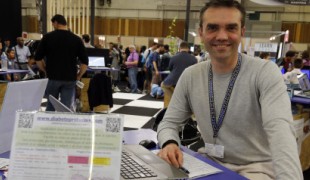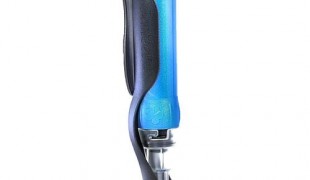- 7297
- 488
- 13
- 13
- 0
- Help Ukraine
About the solution
This led him to be bedridden for 11 years. The treatments weren’t helping and the doctors didn’t know what to do. That’s when Doug knew he had to take action.
He started researching, trying to find a solution. He had found a 2,200-page endocrinology textbook near a garbage can while he was in college. In this book he found an important passage discussing how adrenal disorders could mirror thyroid disorders.
He kept reading medical textbooks and then hypothesised that a whole class of autonomic nervous-system disorders could exist beyond the established categories of what most endocrinologists or neurologists knew about. Then he kept doing his research, this time using a computer. By this time, Doug realised he needed help.
So he teamed up with scientist curious enough to take on a rare case and spend long hours with him parsing it out, by going to a science conference. His partner was Dr. H. Cecil Coghlan, a medical professor at the University of Alabama-Birmingham.
Doug’s first solution came in 2004: a drug. Then Dr. H. Cecil Coghlan told him he might have an adrenal tumour. But three scans of his adrenal glands all came back negative.
So he made a fourth scan that showed his adrenals "glowing brightly," Thus was abnormality consistent with his new theory. His partner confirmed the diagnosis: bilateral adrenal medullary hyperplasia. It means that medullas, or inner regions, of his adrenal glands, were enlarged and acting like tumours. His adrenal glands were producing way too much adrenaline. They found only 32 recorded cases of bilateral adrenal medullary hyperplasia.
Now, for Doug, the solution was simple: to cut out medullas of his adrenal glands.
Dr. Chris Bauer, Lindsay's personal physician, considered this an "atypical presentation of a rare disease", adding: "they don't really write textbooks based on that”.
So Doug proposed a new surgery that would cure himself. “If there isn't a surgery, I'm going to make one”, the patient said.
In 2008, the innovator found a 1980 study from a scientist at Georgia State University, which he summed up as: "you slice the rat's adrenal gland with a razor blade and squeeze it so the medulla pops out like a pimple." Then he found that another version of the adrenal medulla extraction had been done at Harvard. All of these leads made him create a 363-page PDF which proposed a first-ever human adrenal medullectomy.
The chosen doctor to perform was a surgeon from the University of Alabama-Birmingham. In September 2010 Doug went to the university hospital, where the doctor successfully extracted one of his adrenal medullas. In 2012, he underwent a second surgery to remove the medulla from his remaining adrenal gland.
By early 2014, he was coming off some of his meds.
In 2019, the pioneer is still on meds. But he can have a normal life.
Adapted from: https://cnn.it/2YoXB3W
More info: https://douglindsay.net/
https://www.youtube.com/watch?v=e7Qpi0VpMcU
This solution shall not include mention to the use of drugs, chemicals or biologicals (including food); invasive devices; offensive, commercial or inherently dangerous content. This solution was not medically validated. Proceed with caution! If you have any doubts, please consult with a health professional.
DISCLAIMER: This story was written by someone who is not the author of the solution, therefore please be advised that, although it was written with the utmost respect for the innovation and the innovator, there can be some incorrect statements. If you find any errors please contact the patient Innovation team via info@patient-innovation.com
-
-
597
-
0
-
10086

Software to help diabetics
CAREGIVING
(SELF)-CARE: EATING: Eating independently.
(SELF)-CARE: DRINKING: Drinking independently.
diabetes type 1
diabetes type 2
Treatment/Surgical device
App (Including when connected with wearable)
Muscle weakness
Excessive thirst or hunger
Increased urination
Dry skin
Promoting self-management
Managing diabetes
To improve Treatment/Therapy
Caregiving Support
Endocrinology
General and Family Medicine
France
-
-
-
487
-
0
-
7151

Engineer invents pain-free lancing to help friend with diabetes
(SELF)-CARE: EATING: Eating independently.
(SELF)-CARE: DRINKING: Drinking independently.
diabetes type 1
diabetes type 2
Treatment/Surgical device
Assistive Daily Life Device (to help ADL)
Excessive thirst or hunger
Increased urination
Managing diabetes
To implement a diagnostic tool
To improve Treatment/Therapy
Endocrinology
General and Family Medicine
United States
-
-
-
432
-
0
-
6178

Veterans with Phantom Pain Helped with Neurolumen
CAREGIVING
Limb Amputation
Polyneuropathy
Treatment/Surgical device
Difficulty walking or moving
Muscle weakness
Muscle cramps or spasms
Difficulty coordinating movements
Stiffness or rigidity (difficulty moving)
Limited range of motion
Muscle pain or stiffness
Loss of muscle coordination
Numbness or tingling in the extremities
Anxiety
Swelling or inflammation
Managing pain
Recovering from Traumatic Injuries
To improve Treatment/Therapy
Caregiving Support
Endocrinology
General and Family Medicine
General Surgery
Neurology
Orthopedics
Physical Medicine and Rehabilitation
Rheumatology
United States
-
 en
en